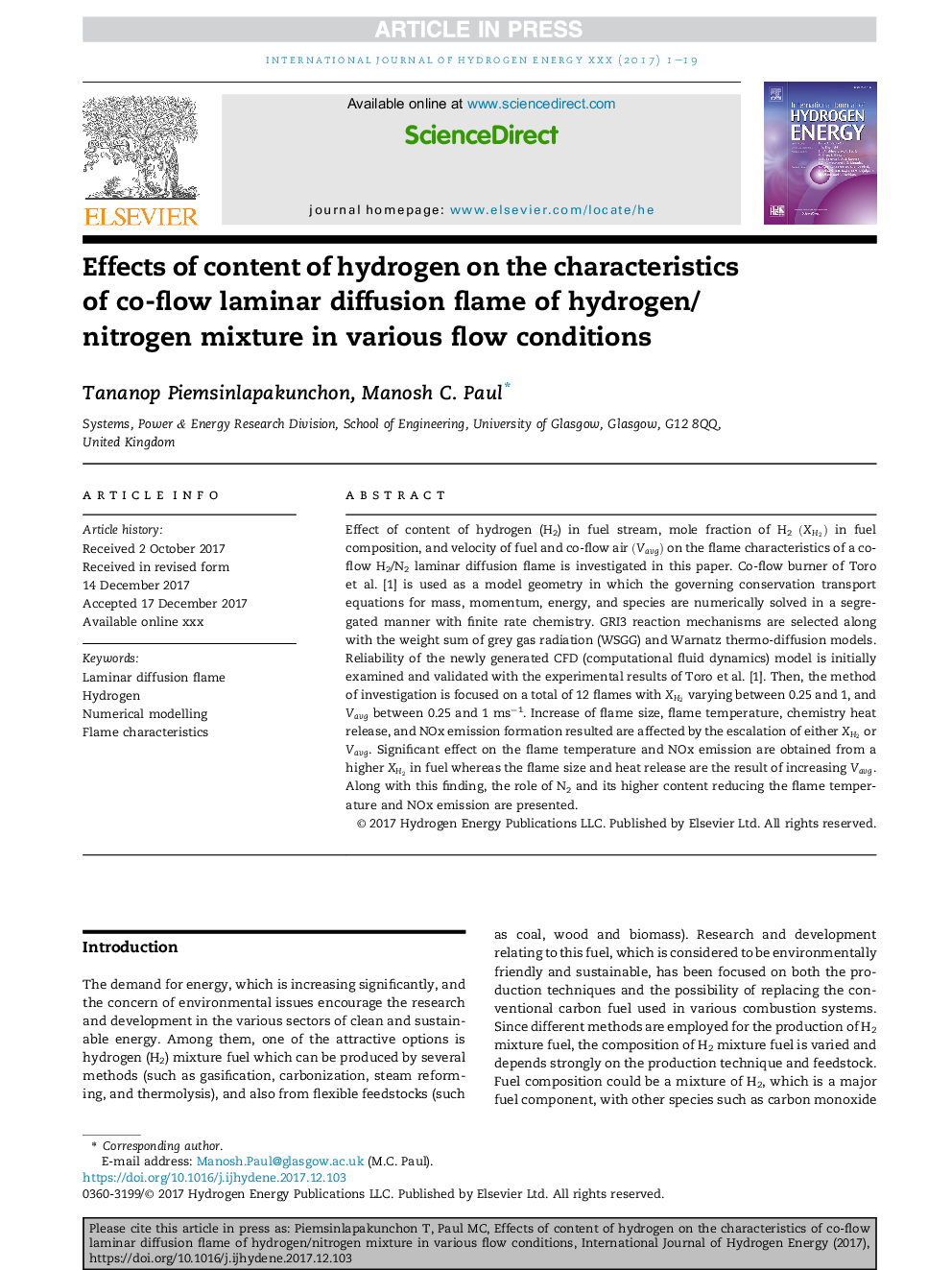| Article ID | Journal | Published Year | Pages | File Type |
|---|---|---|---|---|
| 7708114 | International Journal of Hydrogen Energy | 2018 | 19 Pages |
Abstract
Effect of content of hydrogen (H2) in fuel stream, mole fraction of H2(XH2) in fuel composition, and velocity of fuel and co-flow air (Vavg) on the flame characteristics of a co-flow H2/N2 laminar diffusion flame is investigated in this paper. Co-flow burner of Toro et al. [1] is used as a model geometry in which the governing conservation transport equations for mass, momentum, energy, and species are numerically solved in a segregated manner with finite rate chemistry. GRI3 reaction mechanisms are selected along with the weight sum of grey gas radiation (WSGG) and Warnatz thermo-diffusion models. Reliability of the newly generated CFD (computational fluid dynamics) model is initially examined and validated with the experimental results of Toro et al. [1]. Then, the method of investigation is focused on a total of 12 flames with XH2 varying between 0.25 and 1, and Vavg between 0.25 and 1 msâ1. Increase of flame size, flame temperature, chemistry heat release, and NOx emission formation resulted are affected by the escalation of either XH2 or Vavg. Significant effect on the flame temperature and NOx emission are obtained from a higher XH2 in fuel whereas the flame size and heat release are the result of increasing Vavg. Along with this finding, the role of N2 and its higher content reducing the flame temperature and NOx emission are presented.
Related Topics
Physical Sciences and Engineering
Chemistry
Electrochemistry
Authors
Tananop Piemsinlapakunchon, Manosh C. Paul,
